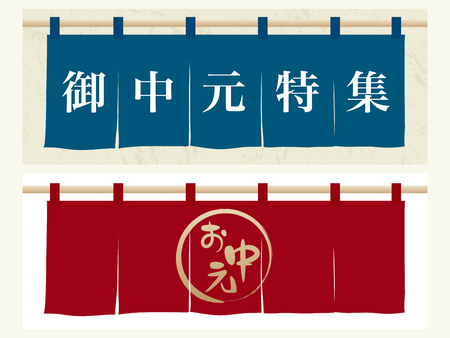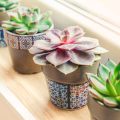Understanding Feng Shui in the American Home
Feng Shui, an ancient Chinese art, is all about creating balance and harmony in your living spaces. In modern American homes, these principles can be used to transform your living room into a welcoming and prosperous space. You don’t need to be an expert or make major renovations—simple changes can make a big difference.
What Is Feng Shui?
At its core, Feng Shui is the practice of arranging furniture, décor, and even colors to enhance the flow of positive energy (also known as “chi”). The goal is to promote wellbeing, comfort, and prosperity for everyone in the home. While rooted in Eastern traditions, Feng Shui adapts beautifully to American lifestyles and design tastes.
Why Focus on the Living Room?
The living room is often the main gathering spot for family and friends. It’s where you relax after a long day or entertain guests. A well-arranged living room sets the tone for the entire house, making it an ideal place to start applying Feng Shui principles.
Key Elements of Feng Shui for Your Living Room
| Element | Description | How to Apply in Your Home |
|---|---|---|
| Layout | Arrange furniture for easy movement and conversation | Avoid blocking pathways; position sofas and chairs to face each other |
| Lighting | Use natural light as much as possible | Keep windows clean; use soft lamps if needed |
| Color | Choose calming or uplifting tones | Neutrals, blues, and greens work well in most American homes |
| Décor | Add personal touches that inspire joy | Family photos, artwork, and plants can invite positive energy |
| Clutter-Free Space | A tidy room allows energy to flow freely | Use baskets or shelves for organization; donate unused items |
The Bagua Map: Adapting an Ancient Tool
The Bagua Map is a tool used in Feng Shui to map out different areas of your home that correspond with specific aspects of life such as wealth, love, and health. For American households, you can overlay this map onto your living room layout to identify which corners or walls relate to certain goals. For example:
- The far left corner from your entrance symbolizes wealth—add a healthy plant or decorative bowl here.
- The center represents health—keep it open and clutter-free.
- The right corner relates to relationships—consider placing a pair of matching objects here.
By understanding these fundamentals, you can start making small but meaningful adjustments that align your living room with both comfort and positive energy. As we continue this guide, you’ll learn more actionable tips tailored for American homes.
2. Choosing the Right Layout for Balance and Flow
Arranging Your Living Room for Harmony
The way you arrange your living room furniture can make a big difference in how your space feels and functions. In Feng Shui, balance and flow are key to creating a welcoming and harmonious environment. Let’s look at practical ways to set up your living room that both honor Feng Shui principles and fit popular American design styles.
Essential Feng Shui Tips for Layout
- Command Position: Place your main seating, like the sofa, so you have a clear view of the entrance without being directly in line with the door. This helps you feel safe and in control.
- Clear Pathways: Arrange furniture so people can walk through easily without bumping into things. Avoid blocking doors or windows with bulky pieces.
- Conversation Areas: Create inviting spots where family and friends can talk comfortably by grouping chairs and sofas together.
- Balance and Symmetry: Use pairs of chairs, lamps, or tables to bring a balanced look. Too much on one side can throw off the energy.
- Natural Light: Make the most of natural light by keeping windows clear of heavy drapes or furniture. Good lighting supports positive energy.
Common American Living Room Layouts & Feng Shui Adjustments
| Layout Style | Description | Feng Shui Tip |
|---|---|---|
| L-Shaped Sectional | Sofa forms an “L” for family lounging | Add a round coffee table in the center to promote smooth energy flow and soften sharp corners |
| Open Concept | Living area blends with kitchen/dining | Use rugs or low shelves to define spaces; keep pathways open between zones |
| TV-Focused Layout | Sofas face TV as main feature | Avoid having the TV directly opposite the entrance; place plants nearby to absorb excess energy from electronics |
| Traditional Symmetrical Layout | Sofas/chairs facing each other with coffee table in between | This is great for conversation and balanced chi; just ensure nothing blocks windows or doors behind seats |
Practical Tips for Everyday Living Rooms
- Flexible Furniture: Choose lightweight chairs or ottomans that can be moved around easily for different occasions.
- Kid- and Pet-Friendly Choices: Select rounded-edge tables and stain-resistant fabrics to keep things relaxed yet stylish.
- Personal Touches: Display meaningful artwork or family photos but avoid cluttering every surface; leave space for energy to circulate.
- Cords & Clutter Control: Use baskets, bins, or smart storage solutions to hide electronic cords and everyday messes, supporting clear energy flow.
Your Living Room, Your Sanctuary
A thoughtful layout combines comfort, communication, and positive energy—while still fitting your lifestyle. By blending Feng Shui principles with American design sensibilities, you’ll create a living room that’s not only beautiful but also supports harmony, relaxation, and prosperity every day.

3. Color, Light, and Decor: Unifying Style with Harmony
Choosing the Right Colors for Your Living Room
In Feng Shui, colors play a big role in setting the mood and energy of your living room. To blend Feng Shui wisdom with American style, its important to pick shades that feel both inviting and harmonious. Here’s a quick guide to popular color palettes and their Feng Shui benefits:
| Color | Feng Shui Element | Vibe & Benefits | Best For |
|---|---|---|---|
| Soft Neutrals (beige, ivory) | Earth | Grounding, calm, welcoming | Main walls or large furniture pieces |
| Sage Green & Olive | Wood | Growth, renewal, balance | Accent walls, pillows, plants |
| Pale Blue & Sky Blue | Water | Peaceful, open, relaxing | Curtains, rugs, art pieces |
| Warm Terracotta & Burnt Orange | Fire/Earth | Energy, warmth, sociability | Throw blankets, accent chairs |
| Crisp White & Soft Gray | Metal | Clarity, freshness, modern touch | Ceilings, shelving units, frames |
| Darker Navy & Charcoal Gray | Water/Metal | Sophistication, depth, protection from negative energy | Statement walls or décor highlights |
Lighting Strategies for Positive Chi Flow
The right lighting can make your living room feel vibrant and full of life. In American homes, mixing natural light with layered artificial lighting supports both style and good Feng Shui:
- Maximize Natural Light: Keep windows clean and use sheer curtains to let sunshine in. Mirrors placed across from windows can help bounce light around the room.
- Add Layers: Combine overhead lights (like chandeliers or recessed lights) with table lamps and floor lamps. This creates a cozy ambiance and prevents dark corners where stagnant energy could collect.
- Avoid Harsh Lighting: Use soft white bulbs instead of bright blue-toned ones. Dimmer switches are perfect for adjusting the vibe based on time of day or activity.
- Create Focus Points: Highlight favorite artwork or family photos with spotlights to draw positive energy to meaningful areas.
Selecting Decor and Accessories with Intention
Pillows, Throws & Rugs: Layering Texture for Comfort
Add softness through plush pillows and throws in calming tones. Choose area rugs that define spaces without overwhelming them — round or oval shapes work especially well for improving chi flow in American-style open layouts.
Artwork & Family Photos: Attracting Joyful Energy
Select art that brings you happiness and motivation — think uplifting landscapes or colorful abstracts. Family photos radiate warmth but avoid displaying sad or lonely images; choose moments filled with smiles and togetherness.
Nature-Inspired Touches: Bringing the Outdoors In
- Potted Plants: Snake plants, money trees, or peace lilies help purify air and symbolize growth and prosperity.
- Bowl of Citrus Fruits: A classic American kitchen feature doubles as a Feng Shui wealth booster when placed in the living room.
A Quick-Reference Table: Feng Shui Accessories That Blend With American Style
| Accessory Type | Feng Shui Benefit | How to Use It |
|---|---|---|
| Potted Plant (e.g., Snake Plant) | Cleans air; invites fresh energy | Place near windows or entryways |
| Candles (unscented or lightly scented) | Adds warmth; activates Fire element | Create small groupings on coffee tables or mantels |
| Bowl of Oranges/Lemons | Symbolizes abundance & luck | A centerpiece on your coffee table or sideboard |
| Mood Lighting (lamps/fairy lights) | Keeps energy flowing at night | Drape fairy lights along shelves; use lamps in reading nooks |
The best Feng Shui living rooms blend these elements into a unified look that feels authentic to your personality and lifestyle while encouraging harmony and prosperity throughout your home.
4. Decluttering and Organization: Creating Space for Abundance
When it comes to Feng Shui, a clean and organized living room isn’t just about aesthetics—it’s about creating an environment where positive energy, or chi, can flow freely. In American homes, the living room is often the heart of the house: a place for relaxing, entertaining, and making memories. By decluttering and organizing this space, you invite harmony and prosperity into your everyday life.
Why Decluttering Matters in Feng Shui
In Feng Shui philosophy, clutter blocks energy pathways. This stagnant energy can lead to feelings of stress, overwhelm, or even financial stagnation. By clearing unnecessary items and keeping your space tidy, you make room for abundance and opportunity to come in. Americans value comfort and functionality in their living spaces, so decluttering should enhance both while supporting positive vibes.
Practical Decluttering Tips for the American Living Room
Decluttering doesn’t have to be overwhelming! Here’s how you can start:
| Area | Common Clutter | Feng Shui-Friendly Action |
|---|---|---|
| Coffee Table | Old magazines, remote controls, unopened mail | Keep only current reading material; use a decorative box for remotes; sort mail daily |
| Shelves & Bookcases | Overcrowded books, unused decor, dust | Edit book collection; display a few meaningful objects; dust regularly for clean chi |
| Sofa & Seating Area | Piled blankets, excess pillows, forgotten items | Limit to 2-3 pillows; neatly fold throws; return stray items to their proper places |
| Corners & Entryways | Shoes, bags, kids’ toys | Add a stylish basket or organizer by the door; designate storage spots for each family member |
| Media Centers | Tangled cords, DVDs/games not in use | Hide cords with organizers; donate or store unused electronics and media |
Easy Organization Methods That Work With Your Lifestyle
- The “One In, One Out” Rule: For every new item that enters the living room (like a new throw pillow or gadget), remove one old item to keep clutter at bay.
- Baskets & Bins: Americans love practical solutions—attractive baskets can store toys, blankets, or magazines while keeping things looking neat.
- Weekly Tidy-Ups: Make decluttering part of your family routine with a quick weekly sweep. Set a timer for 15 minutes to reset your space together.
- Zoning: Divide your living room into functional zones (entertainment area, reading nook) and assign storage solutions that fit each area’s purpose.
- Mindful Decor: Choose decor that brings joy and has personal meaning. Avoid overcrowding shelves or walls with random knick-knacks.
The Feng Shui Mindset: Letting Go With Gratitude
A key part of Feng Shui is being intentional about what you keep in your home. As you let go of objects that no longer serve you—whether it’s outdated electronics or décor from years past—thank them for their role in your life before donating or discarding them. This simple act shifts your mindset from scarcity to abundance.
5. Personal Touches for Lasting Harmony
When you want your living room to truly feel like home, adding personal touches is essential. The good news is, you can express your personality while still following Feng Shui principles for harmony and prosperity. Let’s explore how family photos, artwork, and natural accents can elevate your space and energy.
Balancing Self-Expression with Feng Shui
Feng Shui doesn’t mean you have to give up what makes your home unique. In fact, when done thoughtfully, your personal items can boost positive energy and bring a sense of comfort and belonging to everyone who enters.
Choosing Meaningful Elements
The key is to select pieces that bring joy, represent happy memories, or reflect your aspirations. Here are some ideas and guidelines:
| Personal Touch | Feng Shui Tip | American Home Inspiration |
|---|---|---|
| Family Photos | Display in moderation; place in the east area for family harmony. | Create a gallery wall with cheerful moments from vacations or celebrations. |
| Artwork | Choose images that inspire positivity—nature scenes, abstract art, or uplifting quotes. | Showcase local artists or DIY crafts that make you smile. |
| Natural Accents | Add plants for vitality (avoid sharp leaves); use wood or stone décor for grounding energy. | Potted succulents, a bowl of river rocks, or driftwood from a favorite beach trip. |
| Cultural Heirlooms | Display with respect; avoid broken items which may block good fortune. | A quilt passed down through generations draped on the sofa or a vintage clock on the mantel. |
Where and How to Display Personal Items
- Balance is key: Avoid cluttering surfaces; group items in odd numbers for visual harmony.
- Intentional placement: Place meaningful objects where they catch natural light to amplify positive vibes.
- Sensory elements: Add a cozy throw or scented candles with calming fragrances like lavender to support relaxation.
Quick Tips for American Living Rooms:
- Mix family mementos with modern décor to keep things fresh and inviting.
- If you love sports, display trophies or memorabilia in a way that feels organized—not overwhelming—to maintain energy flow.
- Avoid placing photos of loved ones directly facing the main entrance. Instead, position them where you’ll see them often but not immediately upon entering.
Your living room should tell your story while remaining open to new opportunities and connections. By thoughtfully blending personal treasures with Feng Shui wisdom, you create an environment that supports both lasting harmony and abundant prosperity for everyone under your roof.


